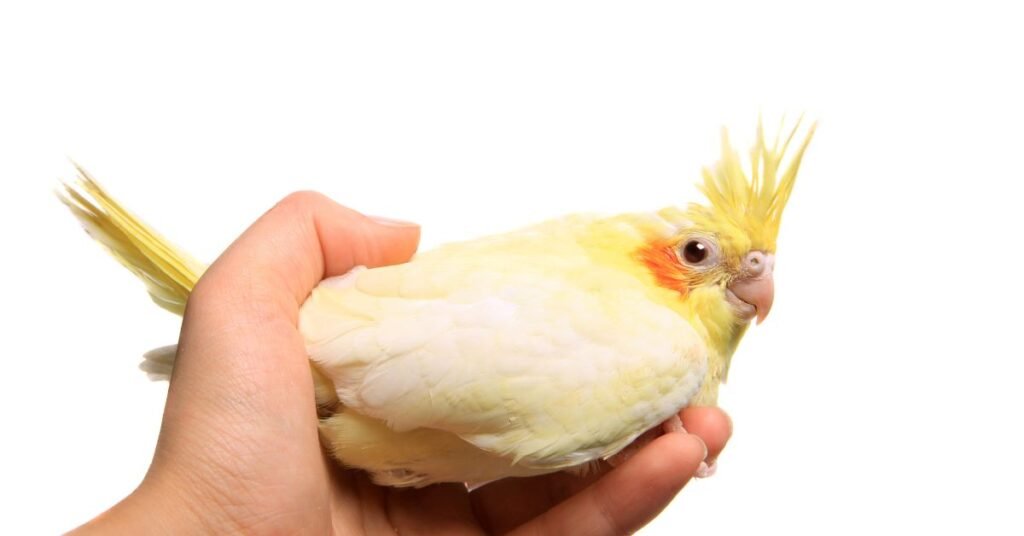Introduction
Albino cockatiels are a beautiful mutation of the common grey cockatiel, scientifically known as Nymphicus hollandicus. As their name suggests, albinos cockatiels have pure white plumage unlike the normal grey coloration of cockatiels. This is caused by a genetic mutation that inhibits the production and deposition of melanin pigment in their feathers. The lack of melanin is what gives albinos cockatiels their distinctive white color.
While beautiful to behold, the albino mutation can cause some health issues for cockatiels including increased sensitivity to sunlight, eye issues, and weakened feathers. However, with proper care and housing, albinos cockatiels can still make lovely and affectionate pet birds. Read on to learn more about the origins, behavior, care requirements, breeding, and common questions about albino cockatiels!
Read More: White Cockatiel

Origins and History
Albino cockatiels first appeared in private aviaries in the 1970s and 80s as a spontaneous genetic mutation in breeding stock. The first true albinos cockatiel is believed to have been hatched in 1981. Since then, dedicated cockatiel breeders have worked to strengthen the bloodlines and stabilize the mutation. While still considered relatively rare, especially compared to grey cockatiels, albinos cockatiels are becoming more common thanks in captive breeding efforts.
Appearance and Behavior
The most striking feature of albino cockatiels is of course their bright white plumage lacking the grey coloration and yellow head crest typical of normal grey cockatiels. In additional their eyes are a deep red color compared to the dark brown or black of normal cockatiels. Their beak, feet, and nails can also appear lighter in color.
Aside from plumage color, albinos cockatiels look and behave similarly to grey cockatiels. They reach 12-14 inches in length, with a wingspan around 14 inches, and weigh between 75-125 grams. Albinos cockatiel personalities can vary from bold and outgoing to shy and reserved, but most bond strongly with their owners over time and thrive on frequent interaction. Their average lifespan is 15-20 years.

Housing and Care
Like any cockatiel, albino cockatiels need a roomy cage, a nutritious diet of pellets, vegetables, fruits and seeds, and plenty of interactive toys to keep them stimulated. Ensure they get 10-12 hours of darkness for an adequate sleep cycle. Limit sunlight exposure which can damage their sensitive skin and eyes by providing shade and an indoor cage location. Clean the cage, food bowls, and water bottle thoroughly each week to prevent disease. With attentive care, albinos cockatiels will happily flutter and chirp around the home for years to come.
Reproduction and Breeding
Breeding albino cockatiels requires some extra care and diligence compared to grey cockatiels. It can be more difficult for the hen to hatch the eggs due to reduced calcium absorption. Closer monitoring of egg laying, incubating, and hatching is advised. Remove non-viable eggs quickly to reduce accidents. Hand-feeding albinos as baby birds also requires extra attentiveness as their lowered defenses make them more prone to bacterial and fungal infections. Consult an experienced breeder when attempting to breed albinos cockatiels.
Conclusion
With their snowy white plumage and ruby red eyes, albinos cockatiels are undoubtedly alluring among cockatiel breeders and pet owners seeking unique birds. Yet prospective owners must carefully weight the added responsibilities of caring for their special needs around sunlight, temperature regulation, breeding difficulties, and infection risks. For those up to the challenge, albinos promise a beautiful long-term companion bird overflowing with affectionate loyalty towards caretakers who provide them a safe and enriching home. Reputable breeders continue working to strengthen albino bloodlines so future generations can enjoy their charming companionship.

Read More: Albino Cockatiel
FAQs
How rare are albino cockatiels compared to normal grey cockatiels?
Albino cockatiels are still substantially rarer than greys, especially among breeders focused on exhibition and show birds rather than pet birds. But their numbers are gradually increasing thanks to dedicated breeding efforts.
Do albinos cockatiels have a different or unusual chirp/squawk compared to normal cockatiels?
No, an albinos cockatiel’s vocalizations sound the same as a normal grey cockatiel’s “chirps,” “squawks,” whistling mimics, and talking ability.
Do albino cockatiel feathers feel different in texture since they lack melanin?
Some owners claim the feathers of albino cockatiels feel softer or silkier, but there is little solid evidence of a major textural difference stemming from their lack of melanin.
What is the typical lifespan of an albino cockatiel?
Albino cockatiels generally have the same 15-20 year lifespan as normal grey cockatiels, given proper care and housing.
How often should an albino cockatiel have a wellness checkup with an avian vet?
Plan on an annual wellness exam with your avian veterinarian to catch any concerning symptoms early since albinos cockatiels are prone to issues. Alert the vet immediately at any signs of injury, illness, or malnutrition.
Can albino cockatiel chicks be reliably handfed if rejected by the parents?
Yes, hand feeding albino chicks can help ensure health and survival if the parents reject them. But extra sanitization efforts and consultation with an experience breeder is vital when hand feeding delicate albino chicks.










